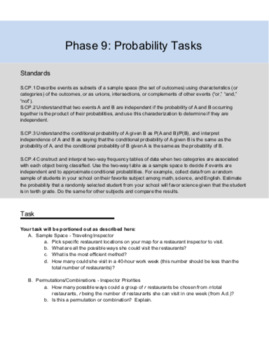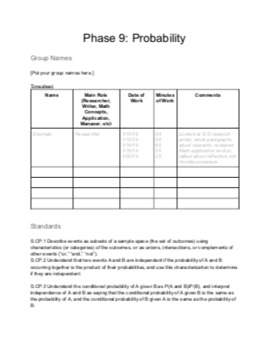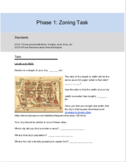HS Geometry City Restaurant Inspector Project - Probability
Keith Sheridan
39 Followers
Grade Levels
9th - 12th
Subjects
Standards
CCSSHSS-ID.B.5
CCSSHSS-CP.A.1
CCSSHSS-CP.A.2
CCSSHSS-CP.A.3
CCSSHSS-CP.A.4
Formats Included
- Zip
Keith Sheridan
39 Followers
Also included in
- This is a bundle of all my city design projects for teaching Geometry.The projects are:Phase 1 City Design - Points, Lines, Planes, Angles, Distance, MidpointPhase 2 Urban Planning - Logic, Conditionals, ProofsPhase 3 Transportation - Parallel, Perpendicular, Equations of LinesPhase 4 Structures - TPrice $20.00Original Price $24.00Save $4.00
Description
This project leads student through the Probability unit of Geometry in learning about Fundamental Counting Principle, Permutations and Combinations, Compound Events, and Two-way Frequency Tables. Students will follow a restaurant inspector through the city they designed (free resource here) to demonstrate these concepts.
This purchase includes a task sheet for students describing the project, a report template for students to provide their information, a rubric, tips on helping students with research, and tips on running the project based on my experience teaching it. Files come in both PDF and DOC so you can tailor them to your needs.
Total Pages
Answer Key
N/A
Teaching Duration
N/A
Report this resource to TPT
Reported resources will be reviewed by our team. Report this resource to let us know if this resource violates TPT’s content guidelines.
Standards
to see state-specific standards (only available in the US).
CCSSHSS-ID.B.5
Summarize categorical data for two categories in two-way frequency tables. Interpret relative frequencies in the context of the data (including joint, marginal, and conditional relative frequencies). Recognize possible associations and trends in the data.
CCSSHSS-CP.A.1
Describe events as subsets of a sample space (the set of outcomes) using characteristics (or categories) of the outcomes, or as unions, intersections, or complements of other events (“or,” “and,” “not”).
CCSSHSS-CP.A.2
Understand that two events 𝘈 and 𝘉 are independent if the probability of 𝘈 and 𝘉 occurring together is the product of their probabilities, and use this characterization to determine if they are independent.
CCSSHSS-CP.A.3
Understand the conditional probability of 𝘈 given 𝘉 as 𝘗(𝘈 and 𝘉)/𝘗(𝘉), and interpret independence of 𝘈 and 𝘉 as saying that the conditional probability of 𝘈 given 𝘉 is the same as the probability of 𝘈, and the conditional probability of 𝘉 given 𝘈 is the same as the probability of 𝘉.
CCSSHSS-CP.A.4
Construct and interpret two-way frequency tables of data when two categories are associated with each object being classified. Use the two-way table as a sample space to decide if events are independent and to approximate conditional probabilities. For example, collect data from a random sample of students in your school on their favorite subject among math, science, and English. Estimate the probability that a randomly selected student from your school will favor science given that the student is in tenth grade. Do the same for other subjects and compare the results.




